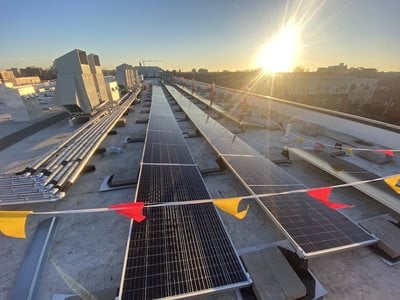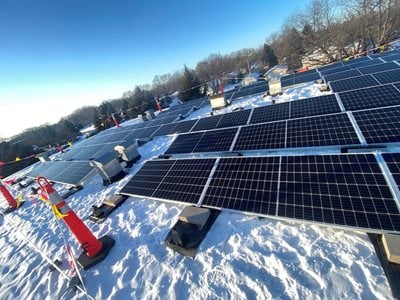Every little bit helps. Leaders at Aeon, a NeighborWorks network organization in Minnesota, know this, which is why they focus on small ways, along with the big, to improve energy efficiency and sustainability. Their residents see the difference. Staff members work with partnering organizations to do free energy audits for their buildings. Even something like LED bulbs or low-flow showerheads can make a difference in a resident's energy usage – and bill – according to Stacy McMahon, vice president of asset management for Aeon.
 Aeon uses WegoWise to help track gas, electric and water usage at its complexes. "You can't manage what you can't measure," explains Bennett Courrier-Oaster, who leads a sustainability reporting team at Wegowise. The model allows customers like Aeon to compare properties building to building and peer to peer, giving them insights and allowing them to track spikes. "Aeon has been one of our super users," Courrier-Oaster says. "We've worked with them to get a handle on where the utility consumption is."
Aeon uses WegoWise to help track gas, electric and water usage at its complexes. "You can't manage what you can't measure," explains Bennett Courrier-Oaster, who leads a sustainability reporting team at Wegowise. The model allows customers like Aeon to compare properties building to building and peer to peer, giving them insights and allowing them to track spikes. "Aeon has been one of our super users," Courrier-Oaster says. "We've worked with them to get a handle on where the utility consumption is."
Just tracking consumption can make a difference. A Wegowise study from 2017 found that owners who actively benchmark – and prioritize energy and water efficiency – see a savings of 4.3% and that the top quartile saves nearly 8% at 24 months and more than 10% at 36 months.
In addition to tracking utilities, Aeon has worked to get high-efficiency boilers into buildings in recent years. And they've investigated solar, adding two solar arrays on rooftops over the past 12 months. Their hope is to install three more systems this year. "Those are direct ways of lowering our carbon footprint and lowering electricity costs," says McMahon, who comes from a conservation background. "For us, it really supports the affordability. It allows us to control rent increases to keep them modest. Every place we can lower operating costs means rents remain more affordable. That connects with our mission."
Aeon projected 15 years ago that addressing efficiencies might save $20 to $30 million in energy and water costs over 20 years. That led to a LEED - Platinum certified property known as The Alliance Addition, the development of Renaissance Box, a LEED Gold-certified historic rehab property, and The Rose, a property that followed guidelines of the Living Building Challenge, which goes beyond LEED measures. It was Minnesota's first building to follow those guidelines.
water costs over 20 years. That led to a LEED - Platinum certified property known as The Alliance Addition, the development of Renaissance Box, a LEED Gold-certified historic rehab property, and The Rose, a property that followed guidelines of the Living Building Challenge, which goes beyond LEED measures. It was Minnesota's first building to follow those guidelines.
It can take up to 10 years for the savings from solar systems to cover the cost of installation. But the savings start immediately, and Aeon is looking at things in the long term. The organization has a green asset management plan, with a focus on improving the health of their buildings and residents.
Lessons learned from the focus on efficiency include:
- Research the products you hope to use. "Energy efficiency and low-flow toilets aren't sexy," says McMahon. "But you have to do your homework and research on the projects you're installing. One thing we learned about low-flow toilets is you have to also investigate the sewer system and make sure it can still operate with less water, or you may need a power assist."
- Provide resident education. "You have to show what's being done, why it's being done, and how it benefits everyone," McMahon says. "Otherwise they might think the low-flow showers just aren't working."
- Know the age of your roof. Solar panels can complicate a roof replacement, and McMahon says it helps if a roof and a solar system are installed near the same time.
In FY20, 126 NeighborWorks network organizations employed some type of green standard, which can include LEED-certified, energy efficiency and more, on a total of 1,026 projects. These include both for-sale and rental projects and included both small repairs and new construction. According to Clare Rosenberger, director of real estate programs, NeighborWorks America designated at least 95 network organizations as green organizations. Other contributions from the network include green vehicles, community gardens and more.

